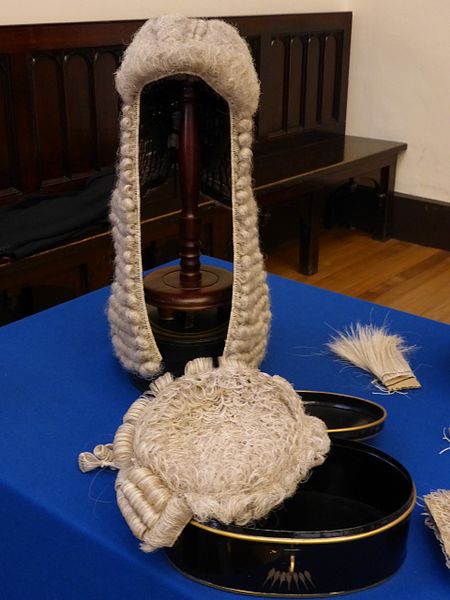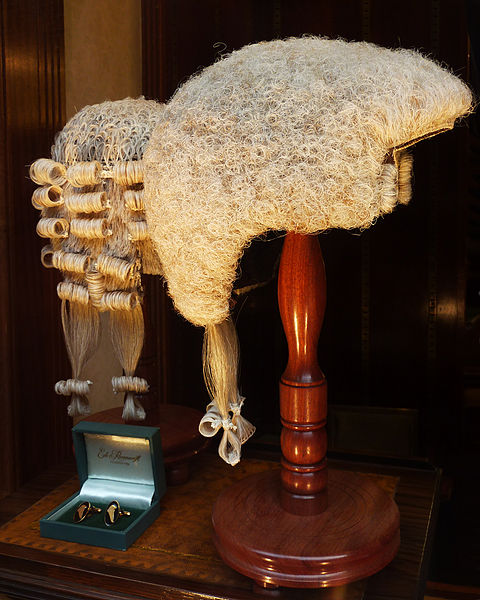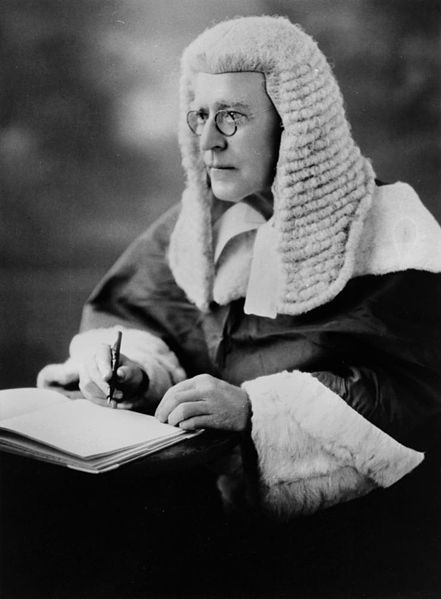You’ve probably all watched a TV show or scene from a movie that takes place in a modern British courtroom. Admit it, you either wondered about or giggled at the wigs. Turns out those wigs generate a lot of interest, making it easy to find answers online.
- The wigs were originally a fashion statement, worn by all fashionable men of means. Good or bad, the legal profession hangs on to tradition even when others let it go.
- Wigs, originally known as perruques in French and perukes in English, became fashionable in France during the reign of Louis XIV (1643-1715). His cousin, Charles II (1630-1685), was the English king who fled the country when Oliver Cromwell forcibly took over. After Cromwell died, Charles II was restored to the throne, a period known as the Restoration. Huge and fascinating story, but for this post, just know that Charles II returned to England in a wig.
- Wigs were fashionable in France and England partly because they hid embarrassing things like lice, or the premature baldness caused by syphilis.

A judges’s wig and advocate’s wig on temporary display in Parliament Hall, Edinburgh. Photo by Kim Traynor via Wikimedia Commons
- The term “bigwig” actually comes from this period. Because wigs were a symbol of wealth and status, people started wearing bigger wigs to show everyone exactly how wealthy and important they were. So we still use “bigwig”, although often disparagingly, to describe someone important.
- As lawyers were men of means, they were initially just following fashion when they started wearing wigs. Wigs fell out of fashion with the general public in the late 18th century.
- The Duty on Hair Powder Act of 1795 was a tax on the powder used on hair and wigs. This tax was repealed in 1869.
- Even today, most of these wigs are made from white horsehair. As the wig ages, the horsehair yellows. Sounds gross, but it’s actually seen as an indication that the attorney is experienced.

Gesehen bei Ede & Ravenscroft, legal wear tailoring and wig making, London, UK. Photo by Oxfordian Kissuth via Wikimedia Commons
- One of the reasons the tradition continued within the legal profession is that the wigs provided a certain amount of anonymity. Members of the court believed that anonymity protected them from anyone who didn’t like their rulings.
- Wigs were worn by the legal communities in most of the former British colonies.
- The wigs and robes worn by barristers and judges are a uniform, an identifier of their livelihood.
- Wigs are only worn in court, not while attorneys are in their offices doing research. And since 2007, English barristers only wear wigs in court for criminal cases.
- Judges wear longer wigs than barristers. Bigwigs, indeed.

Judge John Laskey Woolcock, Puisne Judge, 1 February 1927, died 18 January 1929. Identified from Brisbane Grammar Magazine, July 1929. Photo via Wikimedia Commons
- Most wigs last a barrister or judge’s entire career. That’s good because a barrister’s wig will cost approximately $500, while a judge’s wig will be closer to $3,000.
Those in the legal profession in England are divided over the fate of this tradition. They may just chip away at it until there is nothing left.
What do you think? Dignified or goofy? Do you think this tradition should continue?
